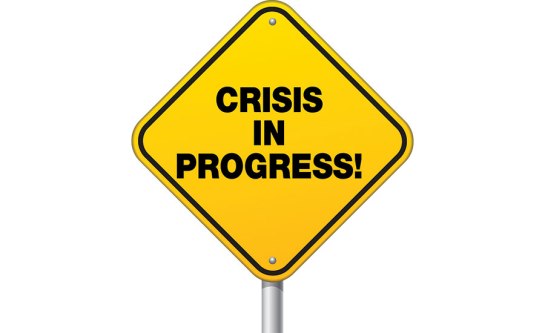Code for the Machines: The Rise of AI-Readable Programming
The Future of Coding: Embracing AI Readability
In the domain of software development, the concept of writing code primarily for artificial intelligence (AI) readability and maintainability is an intriguing prospect that will influence the future of coding practices. While human-readable code remains the standard approach as of August 2023, the rapid advances in AI technology suggest that a paradigm shift may be on the horizon.
The Rise of AI-Centric Coding Styles
As AI systems become increasingly sophisticated and integrated into software development workflows, the need for code that caters to the strengths of these systems may become more pressing. This could lead to the emergence of coding styles specifically tailored for AI readability and maintainability over (sic) human readability and maintainability, encompassing the following characteristics:
Increased Abstraction and Modularisation
AI systems may thrive on highly modularised and abstracted code, where individual components are clearly separated and encapsulated. This could result in a coding style that emphasises smaller, more self-contained units of code with well-defined interfaces, promoting better organisation and encapsulation.
Formalised and Explicit Syntax
While human programmers often rely on conventions and implicit understandings, AI systems may benefit from a more formalised and explicit syntax. This could involve additional annotations or metadata that make the semantics of the code more explicit, catering to the needs of AI systems for unambiguous interpretation.
Pattern Recognition Optimisation
AI systems excel at recognising patterns, so the coding style could be optimised for this strength. Consistent naming conventions, structural similarities, and other patterns that can be easily recognised by AI systems may become more prevalent.
Reduced Redundancy (DRY)
AI systems may be better equipped to handle and maintain code with minimal redundancy, leading to a coding style that emphasises code reuse, shared libraries, and other techniques to reduce duplication.Such techniques will likely make the code more or less illegible to humans, at least to unaided humans.
Documentation Tailored for AI Comprehension
In an AI-centric coding paradigm, the traditional concept of human-readable documentation and comments may become obsolete. Instead, the emphasis would shift towards creating self-documenting code that can be seamlessly interpreted and maintained by AI systems. This could involve incorporating structured annotations, metadata, and other machine-readable elements directly into the codebase.
The documentation process itself could be automated, with AI algorithms capable of parsing the code structure, analyzing the annotations, and generating comprehensive documentation tailored specifically for AI comprehension. This documentation would be optimized for pattern recognition, logical inference, and other capabilities that AI systems excel at, rather than catering to human readability.
Moreover, the maintenance of this documentation could be handled by AI systems, ensuring that it remains up-to-date and consistent with the evolving codebase. As changes are made to the code, the AI-driven documentation would automatically reflect these modifications, eliminating the need for manual updates and reducing the risk of documentation becoming outdated or inconsistent with the actual implementation.
This approach could potentially revolutionize the way documentation is created, maintained, and consumed, shifting the focus from human readability to machine interpretability, and leveraging the strengths of AI systems to streamline the documentation process.
The Hybrid Approach
While the prospect of AI-centric coding styles is intriguing, it’s important to note that a hybrid approach may emerge as a stop-gap or transitionary approach, where code is written to be readable and maintainable by both humans and AI systems. This approach could leverage the strengths of both parties, ensuring that the code remains accessible to human developers while also catering to the needs of AI systems. I suggest this duplication of effert will soon rankle.
Conclusion
As AI technology continues to evolve, the way we approach coding will undergo significant transformations. While the shift towards AI readability and maintainability is still a hypothetical scenario, it is an exciting prospect that could revolutionise the software development industry. Regardless of the direction this trend takes, one thing is certain: the future of coding will be shaped by the interplay between human ingenuity and the capabilities of AI systems. And we can finally discard the shackles of so-called agility, too – in favour of doing what humans do best: attending to folks’ needs.
Here’s a postscript illuminating the use of AI to write code in a style where readability and maintainability by humans is not the main focus:
Postscript: AI-Generated Code for Machine Consumption
In addition to the prospect of writing code specifically tailored for AI readability and maintainability, the advancement of AI technology also raises the intriguing possibility of AI systems themselves generating code in a style optimised for machine consumption, rather than human readability.
As AI systems become more sophisticated in their ability to understand and translate natural language into code, they could potentially generate programs that prioritise efficiency, conciseness, and optimisations over human-friendly constructs. This AI-generated code might forgo traditional conventions and practices aimed at enhancing readability for human developers, instead favoring structures and patterns that are more readily interpretable and maintainable by themselves and/or other AI systems.
Such AI-generated code could be highly compact, with minimal redundancy and a heavy reliance on abstraction and modularisation. It might incorporate complex mathematical models, advanced algorithms, and unconventional coding techniques that leverage the strengths of AI systems while potentially sacrificing human comprehensibility.
While this concept may seem counterintuitive to traditional software development practices, it could open up new avenues for highly optimised and efficient code generation, particularly in domains where performance and scalability are paramount, such as high-performance computing, big data processing, or cutting-edge scientific simulations.
Moreover, as AI systems become increasingly integrated into the software development lifecycle, they could potentially maintain and evolve this AI-generated code autonomously(?), with minimal human intervention. This could lead to a paradigm shift where the primary consumers and maintainers of code are AI systems themselves, rather than human developers.
However, it’s important to note that this scenario is still largely hypothetical and dependent on further advancements in AI technology and its practical applications in software development. Nonetheless, it highlights the potential for AI to reshape not only how we write and maintain code but also how code itself is generated and optimised for machine consumption.




